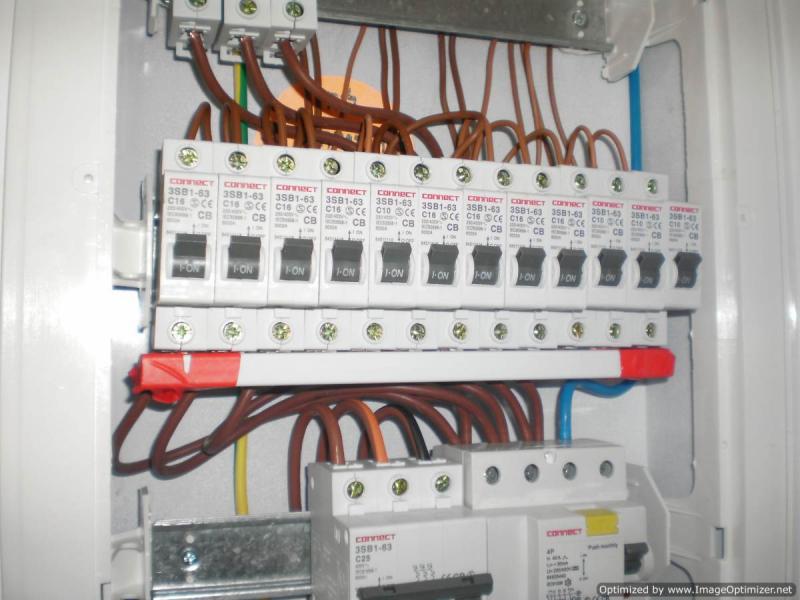Building a new flat, and the power supply is 3 phase 3X25A.
My contractor changed the electrician half-way through the job. The previous electrician was going to wire all the phases together (to my understanding in effect simulating a 75A connection) The new guy is a bit of an #$@%, allocated the circuits to phases and refuses to explain how he allocated them (about 15 circuits) between phases, on the basis that he'll be available (at a fee I presume) to sort things out later.
Setting aside the attitude for a moment, I have usually handled home electrics myself - I am however familiar with older homes. In this case, in the consumer unit the allocation is carried out via an "allocation strip" (?) - I am unfamiliar with these.
I want to be able to reallocate circuits myself (if I suddenly find that the kettle, the washer and the dryer are placed on the same 25A phase, for example) - if anyone can point me to an information source on this this method of allocating circuits, I'd be glad. Have not managed to find anything myself... If this is not a common item, I'll post a pic.
Thanks
D.
My contractor changed the electrician half-way through the job. The previous electrician was going to wire all the phases together (to my understanding in effect simulating a 75A connection) The new guy is a bit of an #$@%, allocated the circuits to phases and refuses to explain how he allocated them (about 15 circuits) between phases, on the basis that he'll be available (at a fee I presume) to sort things out later.
Setting aside the attitude for a moment, I have usually handled home electrics myself - I am however familiar with older homes. In this case, in the consumer unit the allocation is carried out via an "allocation strip" (?) - I am unfamiliar with these.
I want to be able to reallocate circuits myself (if I suddenly find that the kettle, the washer and the dryer are placed on the same 25A phase, for example) - if anyone can point me to an information source on this this method of allocating circuits, I'd be glad. Have not managed to find anything myself... If this is not a common item, I'll post a pic.
Thanks
D.


